-
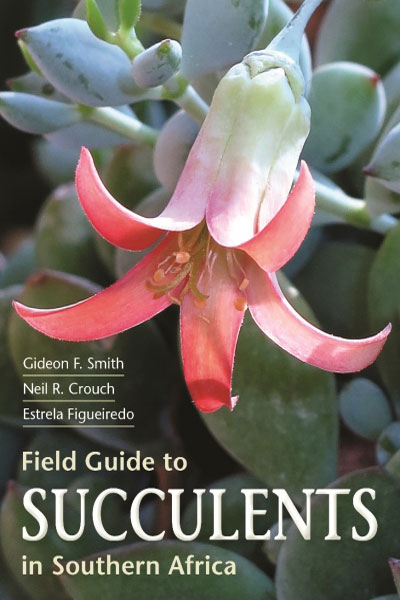 This user-friendly, richly illustrated field guide features more than 700 southern African succulents, focusing on the most interesting and commonly encountered species. An introduction to families and their key features will help readers identify the relevant plant group, while concise accounts describing the plants’ diagnostic features, along with distribution maps, will enable quick ID of species.
This user-friendly, richly illustrated field guide features more than 700 southern African succulents, focusing on the most interesting and commonly encountered species. An introduction to families and their key features will help readers identify the relevant plant group, while concise accounts describing the plants’ diagnostic features, along with distribution maps, will enable quick ID of species. -
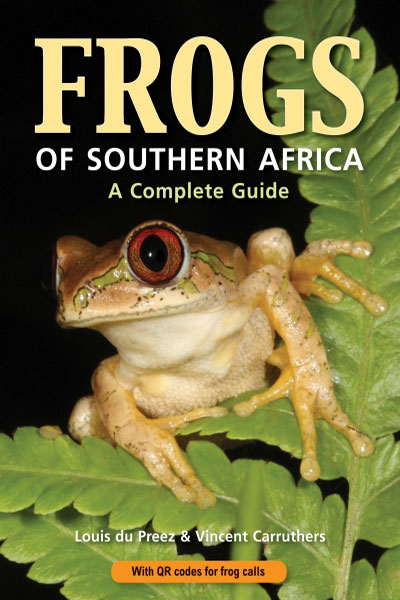 This new edition (with a slight name change) has been thoroughly updated to reflect taxonomic changes based on the most recent research and DNA studies and includes 12 new species and more than 130 new images. All 169 southern African frog species, and their tadpole stages, are fully described, along with their conservation status, calls, habitat, and habits.
This new edition (with a slight name change) has been thoroughly updated to reflect taxonomic changes based on the most recent research and DNA studies and includes 12 new species and more than 130 new images. All 169 southern African frog species, and their tadpole stages, are fully described, along with their conservation status, calls, habitat, and habits. -

-
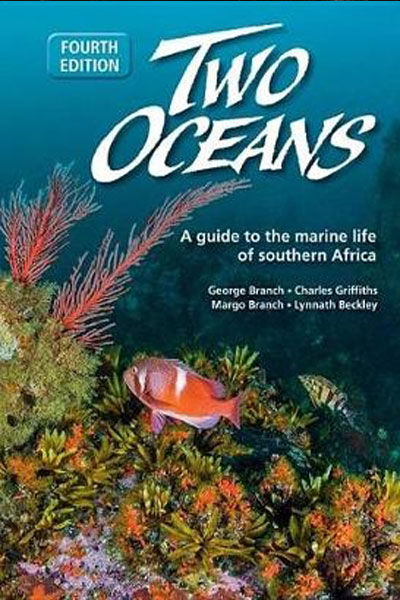 For over two decades Two Oceans has been the pre-eminent book to which scientists, students, divers, and beachcombers turn to identify and learn about marine life, from sponges to whales and seaweeds to dune forests. In this exuberantly colourful, fully revised fourth edition, over 2 000 species are now covered, names and other details have been updated to reflect the latest taxonomy and many new photographs have been added.
For over two decades Two Oceans has been the pre-eminent book to which scientists, students, divers, and beachcombers turn to identify and learn about marine life, from sponges to whales and seaweeds to dune forests. In this exuberantly colourful, fully revised fourth edition, over 2 000 species are now covered, names and other details have been updated to reflect the latest taxonomy and many new photographs have been added. -
 Professor Terence McCarthy with 'How on Earth? opens the door to normally unimaginable processes, changes and incidences of Earth history. Perhaps the most important attributes that set humans apart from other animals are our ability to reason, to articulate our thoughts and to convey them to others.
Professor Terence McCarthy with 'How on Earth? opens the door to normally unimaginable processes, changes and incidences of Earth history. Perhaps the most important attributes that set humans apart from other animals are our ability to reason, to articulate our thoughts and to convey them to others. -
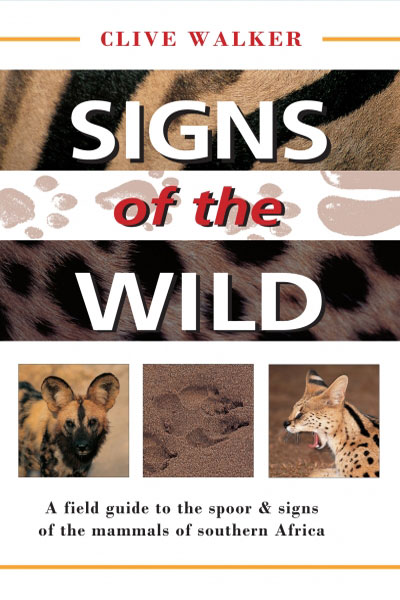 This compact field guide to the identification of Southern African mammals based on their spoor, droppings and skulls has been accepted as the standard work on the subject. This edition offers up-to-date information on identification through signs. This edition provides new illustrations for several species. It also features illustrations of skulls for all the carnivores.
This compact field guide to the identification of Southern African mammals based on their spoor, droppings and skulls has been accepted as the standard work on the subject. This edition offers up-to-date information on identification through signs. This edition provides new illustrations for several species. It also features illustrations of skulls for all the carnivores. -
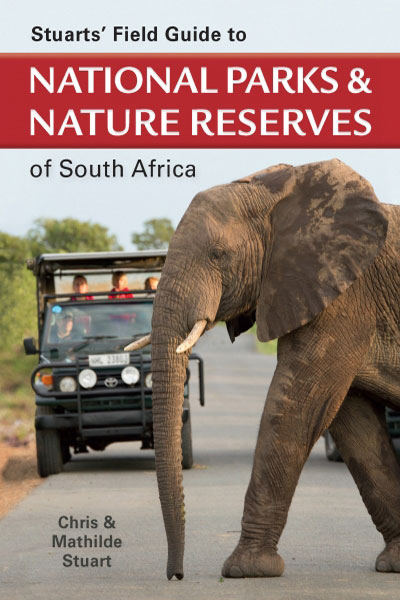 This book is a unique and indispensable guide to the hidden treasures of 43 of South Africa's best and most accessible national parks, nature reserves and wilderness areas. Included are more than 900 photographs, 140 detailed park, locator, provincial and vegetation maps, and a 31-page photographic guide that aids identification of wildlife and vegetation. Organised by province, the conservation areas are comprehensively described, covering history, location, landscape, geology, vegetation, and wildlife.
This book is a unique and indispensable guide to the hidden treasures of 43 of South Africa's best and most accessible national parks, nature reserves and wilderness areas. Included are more than 900 photographs, 140 detailed park, locator, provincial and vegetation maps, and a 31-page photographic guide that aids identification of wildlife and vegetation. Organised by province, the conservation areas are comprehensively described, covering history, location, landscape, geology, vegetation, and wildlife. -
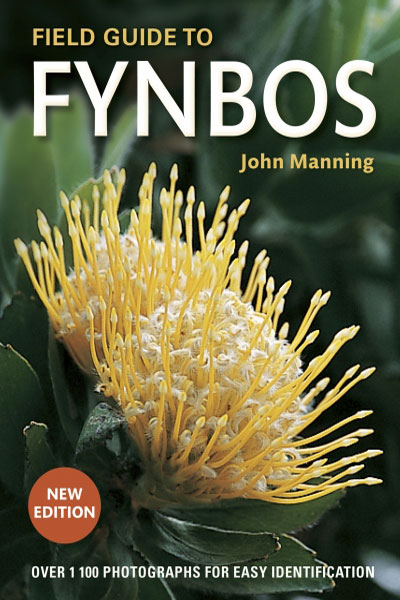 Field Guide to Fynbos features over 1,000 species from the Cape Floristic Region – home to one of the world’s richest floras. This fully updated edition focuses on the most common and ‘showy’ plants. An introduction unpacks the world of fynbos – including origins, diversity, climate, and adaptations and is followed by a photographic key and descriptions of the fynbos families. Species descriptions are accompanied by photographs, distribution maps, comparisons with similar species, and notes on traditional uses.
Field Guide to Fynbos features over 1,000 species from the Cape Floristic Region – home to one of the world’s richest floras. This fully updated edition focuses on the most common and ‘showy’ plants. An introduction unpacks the world of fynbos – including origins, diversity, climate, and adaptations and is followed by a photographic key and descriptions of the fynbos families. Species descriptions are accompanied by photographs, distribution maps, comparisons with similar species, and notes on traditional uses. -
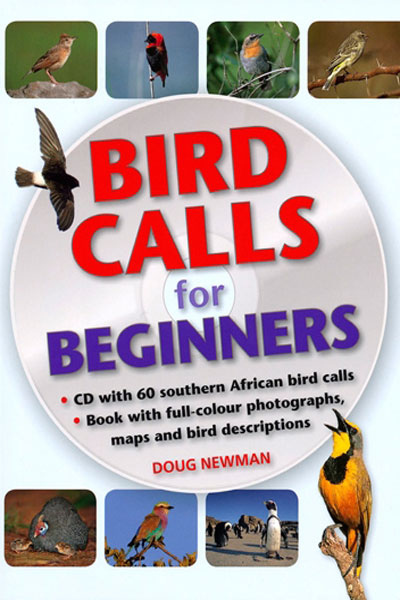 Bird Calls for Beginners, by Doug Newman features 60 common southern African bird calls; the book shows colour photographs of these birds, distribution maps and interesting text about their habits, feeding and nesting routines, and describes their calls.
Bird Calls for Beginners, by Doug Newman features 60 common southern African bird calls; the book shows colour photographs of these birds, distribution maps and interesting text about their habits, feeding and nesting routines, and describes their calls. -
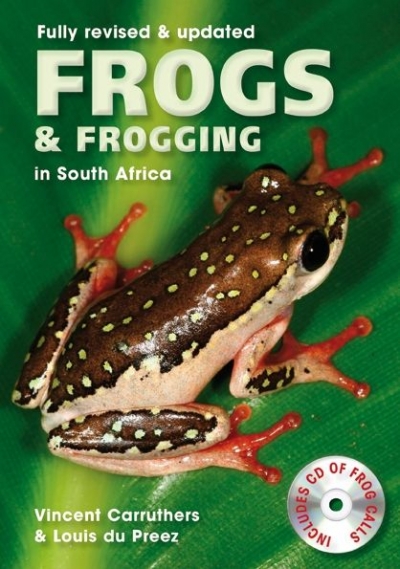 Frogs & Frogging in South Africa offers amateur froggers an accessible and practical introduction to frog identification. This edition of the highly popular guide has been expertly revised and fully updated to reflect the latest advances in taxonomy and nomenclature.
Frogs & Frogging in South Africa offers amateur froggers an accessible and practical introduction to frog identification. This edition of the highly popular guide has been expertly revised and fully updated to reflect the latest advances in taxonomy and nomenclature. -
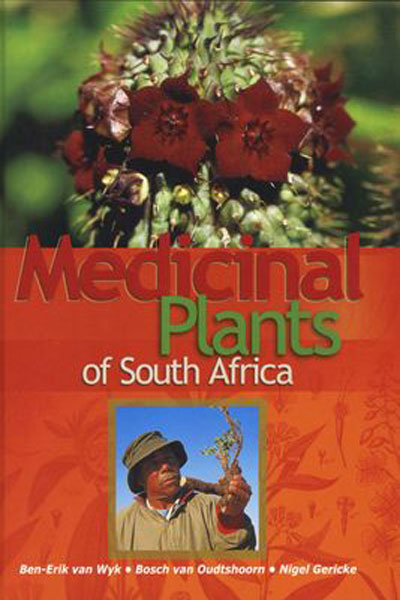 A photographic guide to the most used and best-known South African plant medicines, including their botany, main traditional uses and active ingredients. detailed species descriptions of more than 150 medicinal plants and their close relatives, or other species used in a similar way. Each entry includes the following information: a description of the plant, the plant parts used, medicinal uses, preparation and dosage, active ingredients, and pharmacological effects.
A photographic guide to the most used and best-known South African plant medicines, including their botany, main traditional uses and active ingredients. detailed species descriptions of more than 150 medicinal plants and their close relatives, or other species used in a similar way. Each entry includes the following information: a description of the plant, the plant parts used, medicinal uses, preparation and dosage, active ingredients, and pharmacological effects. -
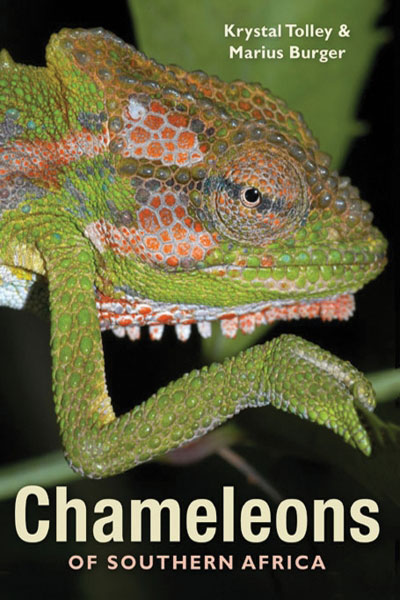 Chameleons are fascinating creatures: they almost always evoke in people a strong response, be it delight, wonder, or fear. Chameleons of Southern Africa explores this interesting group of lizards and discusses their strange and unusual, sometimes unnerving, characteristics. It presents an overview of all types of chameleons (of which there are up to 160 species in total, worldwide), their history, geographic distribution (restricted mainly to Madagascar and Africa), reproduction, behaviour and their relationships to each other.
Chameleons are fascinating creatures: they almost always evoke in people a strong response, be it delight, wonder, or fear. Chameleons of Southern Africa explores this interesting group of lizards and discusses their strange and unusual, sometimes unnerving, characteristics. It presents an overview of all types of chameleons (of which there are up to 160 species in total, worldwide), their history, geographic distribution (restricted mainly to Madagascar and Africa), reproduction, behaviour and their relationships to each other. -
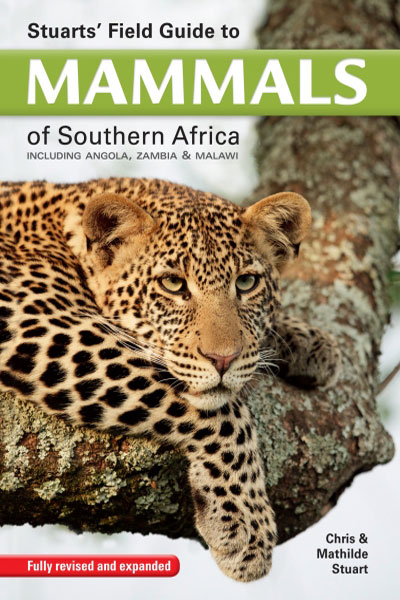 Greater southern Africa has a wealth of mammal species, almost 400 – all of which are covered in this fully updated, comprehensive field guide. Now expanded to include species found in Angola, Zambia, and Malawi, it has also been extensively revised to include: the most recent research and taxonomy, revised distribution maps and many new images.
Greater southern Africa has a wealth of mammal species, almost 400 – all of which are covered in this fully updated, comprehensive field guide. Now expanded to include species found in Angola, Zambia, and Malawi, it has also been extensively revised to include: the most recent research and taxonomy, revised distribution maps and many new images. -
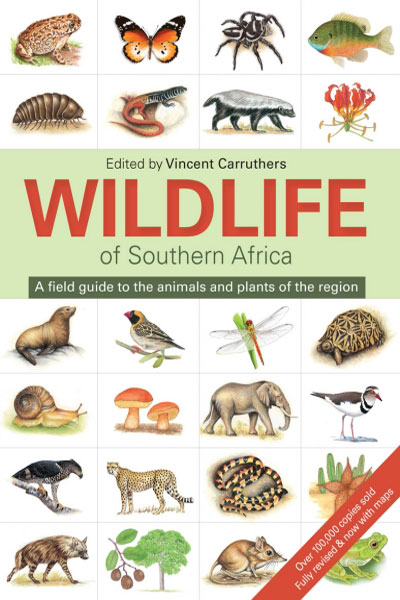 A field guide to the wildlife of southern Africa, describing over 2,000 plants and animals, with accurate illustrations in full colour. This book has been a trusted field companion for many years. Comprehensively updated, it now features range maps for most groups. The chapters are colour-coded for easy reference, and diagnostic features appear in bold type within the descriptions. Each chapter is written by a leading expert in the field. All the main plant and animal groups are covered: Lower invertebrates; Spiders and other arachnids; Insects; Freshwater fishes; Frogs; Reptiles; Birds; Mammals; Grasses, sedges, ferns, and fungi; Wildflowers; Trees.
A field guide to the wildlife of southern Africa, describing over 2,000 plants and animals, with accurate illustrations in full colour. This book has been a trusted field companion for many years. Comprehensively updated, it now features range maps for most groups. The chapters are colour-coded for easy reference, and diagnostic features appear in bold type within the descriptions. Each chapter is written by a leading expert in the field. All the main plant and animal groups are covered: Lower invertebrates; Spiders and other arachnids; Insects; Freshwater fishes; Frogs; Reptiles; Birds; Mammals; Grasses, sedges, ferns, and fungi; Wildflowers; Trees. -
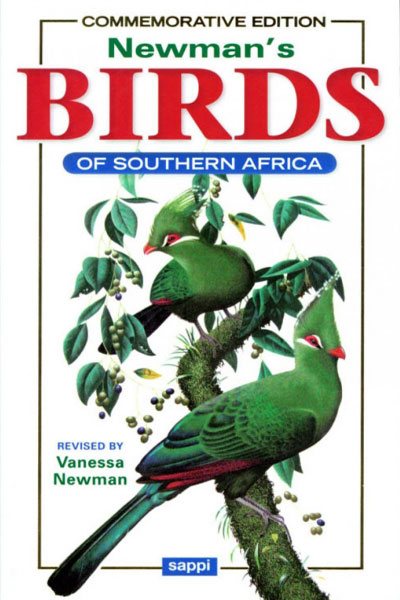 This commemorative tenth edition celebrates the contribution of the late author, Kenneth Newman, fully revised and updated by his daughter, Vanessa Newman, to reflect the latest research, taxonomy, and common names. Newman's Birds of Southern Africa, a leading field guide in the region, illustrates and fully describes all the birds recorded from the Antarctic to the Zambezi River.
This commemorative tenth edition celebrates the contribution of the late author, Kenneth Newman, fully revised and updated by his daughter, Vanessa Newman, to reflect the latest research, taxonomy, and common names. Newman's Birds of Southern Africa, a leading field guide in the region, illustrates and fully describes all the birds recorded from the Antarctic to the Zambezi River. -
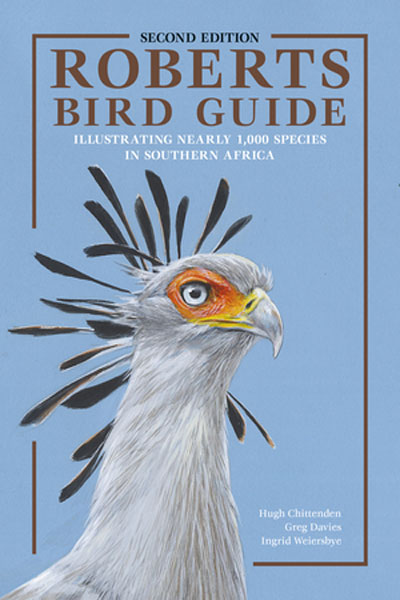 Covering nearly 1,000 species found in southern Africa (south of the Cunene and Zambezi rivers), this 570-page revised edition of Roberts Bird Guide features stunning new artwork detailing seasonal, age and sexual differences in approximately 240 annotated colour plates ...
Covering nearly 1,000 species found in southern Africa (south of the Cunene and Zambezi rivers), this 570-page revised edition of Roberts Bird Guide features stunning new artwork detailing seasonal, age and sexual differences in approximately 240 annotated colour plates ...
